Pictograph Cave State Park
- December 28, 2023
- 0 comment
Pictograph Cave State Park is a fascinating destination for anyone interested in the rich cultural history of Montana. Located just a short drive from Billings, this park offers visitors a glimpse into the lives of the region’s earliest inhabitants. Spanning 23 acres, this archaeological gem encompasses three caves Pictograph, Middle, and Ghost caves each holding secrets from a bygone era. Since the initiation of excavations in 1937, these caves have unveiled a treasure trove of artifacts, offering a captivating window into the lives of Montana’s early inhabitants.
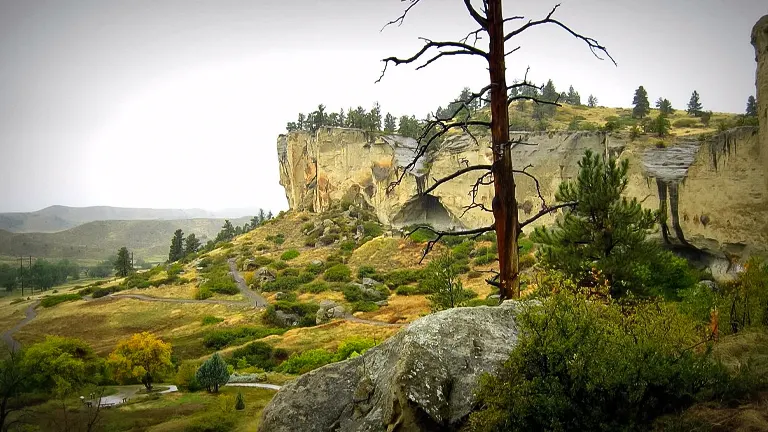
Adorned with vivid pictographs believed to be between 200 and 2,100 years old, Pictograph Cave stands as a testament to the rich cultural heritage and artistic expressions of Native American communities. Beyond the archaeological wonders, the park boasts scenic trails, interpretive signs, and a visitor center, inviting both history enthusiasts and nature lovers to immerse themselves in the captivating allure of Pictograph Cave State Park.
Characterizing Features of the Pictograph Cave State Park
- Archaeological Significance: Pictograph Cave State Park is distinguished by its archaeological significance, with excavations dating back to 1937. The site has yielded over 30,000 artifacts and served as one of Montana’s initial grounds for professional archaeological studies. The findings offer valuable insights into the early human presence in the region.
- Pictographs: The highlight of the park is the presence of pictographs, ancient paintings adorning the cave walls. Ranging from depictions of animals and warriors to enigmatic symbols, these pictographs are estimated to be between 200 and 2,100 years old. The cave art provides a unique visual narrative of the Native American cultures that once thrived in the area.
- Cave Complex: Comprising three caves—Pictograph, Middle, and Ghost caves—the complex adds layers of historical depth. Pictograph Cave, the largest of the trio, holds the majority of the ancient paintings and has been a focal point for both archaeological study and visitor exploration.
- Natural Setting: Set against the backdrop of Montana’s picturesque landscapes, the park features a diverse natural setting. Rolling hills, wildflowers, and panoramic views contribute to the overall experience, creating a harmonious blend of archaeological wonders and scenic beauty.
- Cultural Gathering Place: Beyond its archaeological value, Pictograph Cave has long been recognized as a culturally significant gathering place for American Indians. The cave complex served as a site of mystical power, further enhancing its importance beyond the tangible artifacts.
- Museum and Visitor Center: The park includes amenities such as a museum and visitor center, providing a curated space for visitors to delve deeper into the historical and cultural context of the artifacts. These facilities also play a role in preserving and showcasing the archaeological discoveries made at the site.
- Interpretive Trails: Paved interpretive trails guide visitors through the park, offering a comprehensive understanding of the paintings, geological features, and the vegetation of the area. The trails provide an immersive experience, allowing visitors to connect with the landscape and history.
- Spirit Writing Phenomenon: Pictograph Cave State Park is known for a unique phenomenon called “spirit writing.” Soluble minerals leach through the sandstone, covering the rock art. On occasion, when the wall becomes wet, this mineral veil lifts, revealing hidden pictographs. This adds an element of mystery and awe to the visitor experience.
- National Historic Landmark Status: Recognizing its paramount importance, Pictograph Cave State Park attained National Historic Landmark status on July 19, 1964. This designation underscores its enduring significance to Northern Plains Archaeology and cultural heritage.
- Educational Opportunities: The park serves as an educational hub, offering visitors a chance to learn about rock art, artifacts, and the broader historical context of the region. Interpretive signs and museum displays contribute to the dissemination of knowledge, making the site a valuable resource for both locals and tourists alike.
History
Nestled 5 miles south of Billings, Montana, Pictograph Cave State Park weaves a compelling history that spans millennia. The site’s archaeological journey began in 1937, establishing it as a pioneering ground for professional studies in Montana. Unveiling over 30,000 artifacts, the three caves Pictograph, Middle, and Ghost—offer a tangible connection to the lives of early inhabitants. Pictograph Cave, the largest, showcases ancient pictographs, vivid paintings believed to be between 200 and 2,100 years old, narrating the spiritual and cultural practices of Native American communities.
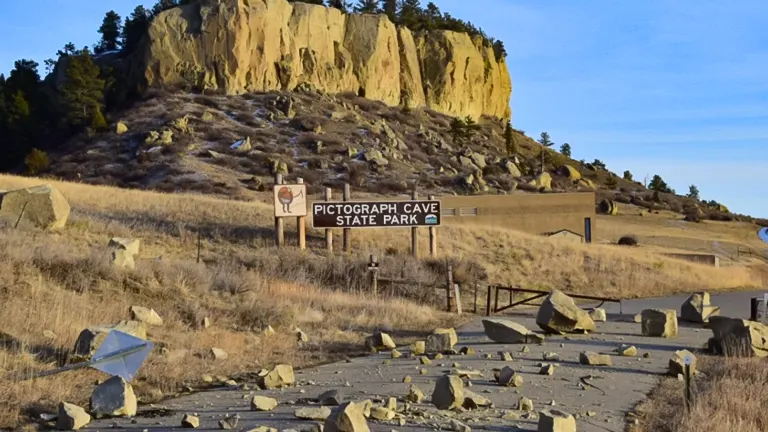
Beyond its archaeological significance, the park served as a culturally significant gathering place for American Indians, nestled in a sandstone bluff along a well-traveled path. The excavation period from 1938 to 1941 drew substantial public interest, resulting in over 10,000 visitors and the construction of a museum and visitor center. However, disruptions during World War II led to a decline in visitation and challenges in artifact tracking.
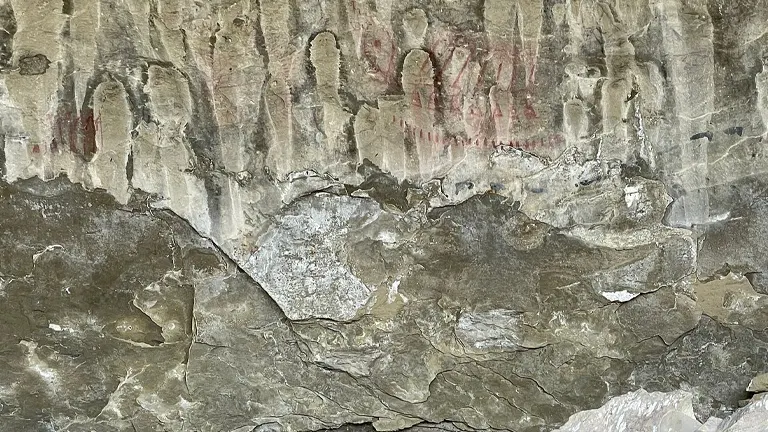
In 1963, the City of Billings took over the park administration, emphasizing its tourism potential. Designated a National Historic Landmark in 1964, Pictograph Cave continued to symbolize the rich history of Northern Plains Archaeology. Despite the disruptions, the park officially became a state park in 1991, managed by the Montana Department of Fish and Game. Today, it stands as a testament to cultural resilience, blending archaeological wonders with interpretive trails, museum displays, and the mesmerizing “spirit writing” phenomenon, ensuring that the stories etched into its cavern walls endure for generations.
Importance in Conservation and Recreation of Pictograph Cave State Park
Pictograph Cave State Park plays a vital dual role in both conservation and recreation, making it a cornerstone in the preservation of Montana’s cultural and natural heritage. On the conservation front, the park stands as a living testament to the rich archaeological tapestry of the region. Its three caves, particularly the largest Pictograph Cave serve as repositories of ancient artifacts and pictographs, offering invaluable insights into the lives of Native American communities that once thrived in the area. The ongoing efforts to safeguard and interpret these cultural treasures contribute significantly to the conservation of Montana’s archaeological legacy.
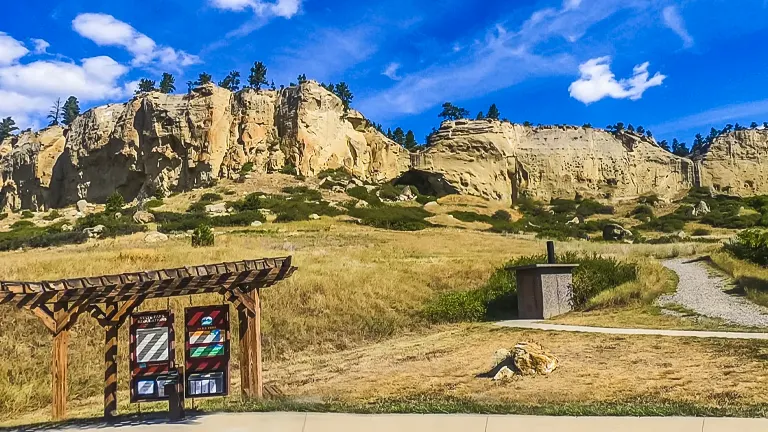
Simultaneously, Pictograph Cave State Park is a haven for recreational exploration, providing a unique blend of education and outdoor adventure. Its interpretive trails guide visitors through the archaeological wonders, offering a firsthand experience of the site’s historical and geological significance. The park’s natural beauty, with its scenic vistas and diverse landscapes, provides a serene backdrop for hiking and exploration. The inclusion of a museum, visitor center, and picnic facilities enhances the recreational experience, allowing visitors to delve into the park’s history while enjoying the splendor of Montana’s outdoors. Pictograph Cave State Park, therefore, stands not only as a sanctuary for the preservation of cultural treasures but also as a dynamic space where conservation and recreation harmoniously converge.
Unique Location of Pictograph Cave State Park

Located within the captivating landscapes of Montana, Pictograph Cave State Park occupies a unique and historically significant location just 5 miles south of Billings. The park’s distinctiveness lies not only in its breathtaking natural surroundings but also in its role as a gateway to the past. Set against a backdrop of rolling hills and panoramic vistas, the park’s three caves—Pictograph, Middle, and Ghost—stand as portals to a bygone era, revealing a trove of artifacts and ancient pictographs that offer a tangible connection to the prehistoric lives of Native American communities. Positioned along a well-traveled path near the confluence of Bitter Creek and the Yellowstone River, the park’s natural shelters not only contribute to its archaeological richness but also evoke a sense of awe and mysticism, making Pictograph Cave State Park a truly unparalleled destination where the beauty of nature converges with the echoes of ancient history.
Diverse Vegetation and Unique Plant Species:
- Ponderosa Pine (Pinus ponderosa): Ponderosa Pines grace the landscape of Pictograph Cave State Park, contributing to its scenic beauty. These majestic evergreens, with their distinctive orange-brown bark, provide a canopy for the park’s trails and add to the overall biodiversity of the region.
- Prickly Pear Cactus (Opuntia): Among the resilient flora in the park, the Prickly Pear Cactus thrives in the arid conditions. With its flat, spiny pads and vibrant flowers, this succulent plant plays a role in the park’s ecosystem, adapting to the dry climate and providing a unique visual element.
- Big Sagebrush (Artemisia tridentata): The fragrance of Big Sagebrush permeates the air in Pictograph Cave State Park. This aromatic shrub, scientifically known as Artemisia tridentata, is well-adapted to the park’s semi-arid environment, contributing to the diverse plant community.
- Serviceberry (Amelanchier alnifolia): Serviceberry, scientifically known as Amelanchier alnifolia, graces the park with its delicate white blossoms in spring. This deciduous shrub not only adds to the visual appeal but also provides essential forage for wildlife, enhancing the park’s ecological balance.
- Western Yarrow (Achillea millefolium): Western Yarrow, or Achillea millefolium, is a common sight along the trails of Pictograph Cave State Park. This herbaceous perennial, with its finely divided leaves and clusters of small white flowers, adds to the diversity of the park’s plant life.
- Indian Paintbrush (Castilleja): The vibrant hues of Indian Paintbrush (Castilleja) bring a splash of color to the park’s meadows. This wildflower, with its distinctive red-orange bracts, contributes to the park’s floral diversity and attracts pollinators during the blooming season.
- Rocky Mountain Juniper (Juniperus scopulorum): Rocky Mountain Juniper, scientifically known as Juniperus scopulorum, dots the landscape with its evergreen presence. With its blue-green foliage and berry-like cones, this native juniper species adds to the visual richness of the park’s vegetation.
- Mountain Mahogany (Cercocarpus ledifolius): Mountain Mahogany, scientifically named Cercocarpus ledifolius, is a hardy shrub found in the park, particularly on rocky slopes. Its leathery leaves and feathery seeds contribute to the park’s diverse plant community, showcasing adaptation to the rugged terrain.
- Wild Bergamot (Monarda fistulosa): Wild Bergamot, or Monarda fistulosa, graces the park with its clusters of lavender-pink flowers. This aromatic herb, also known as Bee Balm, attracts pollinators and adds a delightful fragrance to the air during the blooming season.
- Douglas Fir (Pseudotsuga menziesii): Douglas Fir, scientifically known as Pseudotsuga menziesii, stands tall in certain areas of Pictograph Cave State Park. This coniferous tree, with its distinct cones and evergreen needles, contributes to the park’s diverse forested areas, creating a varied and dynamic landscape.
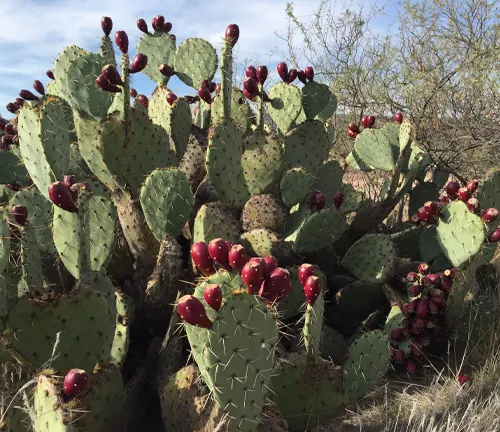
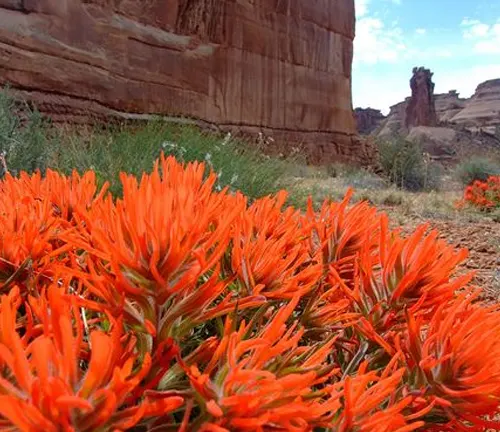
Different Species of Mushrooms in Pictograph Cave State Park
- Chanterelle Mushroom (Cantharellus cibarius): Chanterelles, including the scientifically named Cantharellus cibarius, can be found in the forested areas of Pictograph Cave State Park. Recognized for their golden-yellow color and distinctive trumpet-like shape, these edible mushrooms contribute to the park’s fungal diversity.
- Morel Mushroom (Morchella): Morel mushrooms, belonging to the genus Morchella, are a sought-after fungal delicacy that can emerge in the park’s woodlands. With their distinctive honeycomb appearance, these mushrooms are a fascinating find for foragers and contribute to the park’s mycological allure.
- Turkey Tail Mushroom (Trametes versicolor): Adorning deadwood and fallen trees, the Turkey Tail Mushroom, scientifically known as Trametes versicolor, adds a burst of color to the park. With its concentric rings of various hues, this bracket fungus is not only visually striking but also plays a role in decomposition and nutrient cycling.
- Amanita Muscaria (Amanita muscaria): The iconic Amanita Muscaria, recognized for its bright red cap adorned with white spots, can be encountered in the park’s woodlands. Although visually striking, this mushroom contains toxins and is not recommended for consumption, serving as a reminder of the diverse and sometimes toxic nature of fungi.
- Bolete Mushrooms (Boletus): Various species of Bolete mushrooms, within the genus Boletus, can be found beneath the canopy of Pictograph Cave State Park. Known for their fleshy caps and often thick stems, these mushrooms contribute to the park’s mycological diversity.
- Russula Mushroom (Russula): Russula mushrooms, belonging to the genus Russula, can be observed in the park’s woodlands. With their vibrant colors, ranging from red to yellow and green, these mushrooms add a splash of diversity to the forest floor and play a role in the park’s ecosystem.
- Lion’s Mane Mushroom (Hericium erinaceus): Occasionally found on dead or dying hardwood trees, the Lion’s Mane Mushroom, scientifically named Hericium erinaceus, is a distinctive fungus with cascading white spines. Known for its culinary uses and potential medicinal properties, this mushroom enhances the park’s mycological interest.
- Oyster Mushroom (Pleurotus ostreatus): Oyster mushrooms, scientifically classified as Pleurotus ostreatus, can be found on decaying wood in the park. Recognizable by their oyster-shaped caps, these mushrooms contribute to the decomposition of organic matter in the park’s ecosystem.
- Shaggy Mane Mushroom (Coprinus comatus): The Shaggy Mane Mushroom, or Coprinus comatus, is a distinctive species found in the park, often near grassy areas. Known for its tall, shaggy cap and inky black spores, this mushroom undergoes rapid autodigestion, adding a dynamic element to the fungal landscape.
- Reishi Mushroom (Ganoderma lucidum): Reishi mushrooms, scientifically known as Ganoderma lucidum, may be encountered on dead or decaying hardwoods within Pictograph Cave State Park. Renowned for their medicinal properties in traditional medicine, these mushrooms contribute to the park’s mycological diversity while holding cultural significance.
Fauna:
- Mule Deer (Odocoileus hemionus): Mule deer, scientifically named Odocoileus hemionus, are a common sight in Pictograph Cave State Park, gracefully navigating through the park’s diverse terrain. Their adaptability to the semi-arid environment makes them a key component of the park’s fauna.
- Red Fox (Vulpes vulpes): The red fox, or Vulpes vulpes, is a skilled predator found in the park’s woodlands and meadows. Known for its reddish coat and bushy tail, the red fox contributes to the park’s ecological balance by controlling small mammal populations.
- American Robin (Turdus migratorius): The American robin, scientifically named Turdus migratorius, is a familiar songbird in Pictograph Cave State Park. With its distinctive orange-red breast, this bird is often heard singing in the park’s varied habitats.
- Rocky Mountain Elk (Cervus canadensis nelsoni): Rocky Mountain elk, belonging to the subspecies Cervus canadensis nelsoni, are occasionally spotted in the park’s wooded areas. Their presence adds to the diversity of large herbivores and contributes to the park’s natural balance.
- Black-capped Chickadee (Poecile atricapillus): The black-capped chickadee, scientifically known as Poecile atricapillus, is a small, acrobatic bird frequently observed in the park’s mixed forests. Recognizable by its distinctive black cap and cheerful song, this chickadee is a charming resident of the park.
- Coyote (Canis latrans): The coyote, or Canis latrans, is an adaptable predator that roams Pictograph Cave State Park. Known for its cunning behavior, the coyote plays a crucial role in regulating small mammal populations and contributes to the park’s overall biodiversity.
- Northern Flicker (Colaptes auratus): The northern flicker, scientifically named Colaptes auratus, is a woodpecker species found in the park’s woodlands. Identified by its striking plumage and distinctive drumming sounds, this bird contributes to the park’s avian diversity.
- Western Painted Turtle (Chrysemys picta bellii): In the park’s water bodies, such as Bitter Creek, the western painted turtle, scientifically named Chrysemys picta bellii, can be found basking on rocks or logs. These freshwater turtles add to the park’s aquatic ecosystem.
- Great Horned Owl (Bubo virginianus): The great horned owl, or Bubo virginianus, is a nocturnal predator that inhabits the park’s woodlands. Known for its distinct hooting calls, this owl contributes to the park’s nighttime soundscape and helps control rodent populations.
- Yellow-bellied Marmot (Marmota flaviventris): The yellow-bellied marmot, scientifically named Marmota flaviventris, is a diurnal rodent often seen in the park’s rocky areas. Recognizable by its distinctive whistle, this marmot contributes to the park’s diverse mammalian fauna.
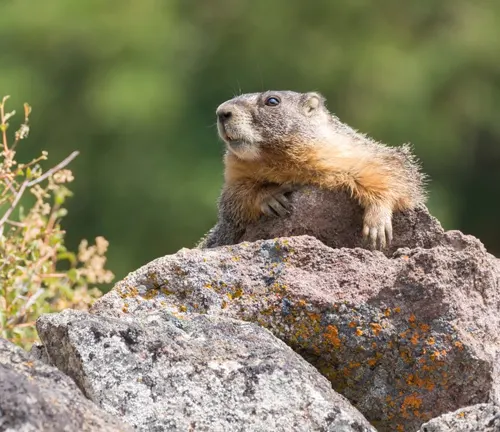

Importance as a Wildlife Corridor and Habitat for Threatened Species
Pictograph Cave State Park serves as a vital wildlife corridor and habitat, playing a crucial role in the conservation of biodiversity and the protection of threatened species in the region. As a wildlife corridor, the park provides a connecting pathway for various animal species, facilitating the movement of populations and enabling genetic diversity. Its diverse topography, encompassing woodlands, meadows, and rocky slopes, creates a mosaic of habitats that supports a wide array of wildlife. This connectivity is particularly important for species like the Rocky Mountain elk (Cervus canadensis nelsoni) and mule deer (Odocoileus hemionus), allowing them to traverse the landscape in search of food, water, and breeding grounds.
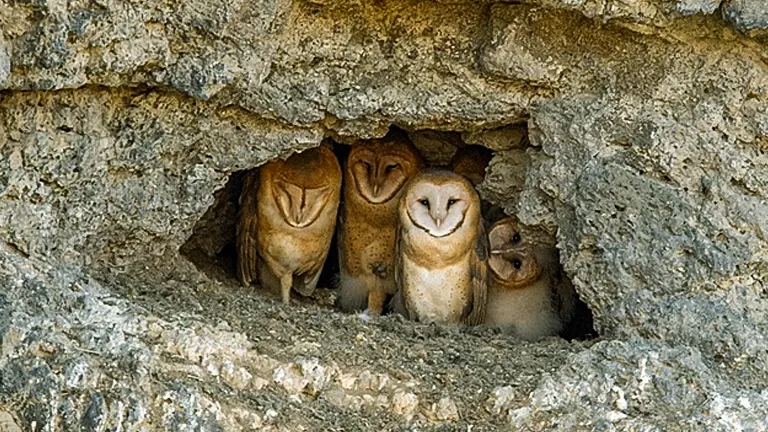
The park’s significance is further emphasized as a habitat for threatened species. Species such as the western painted turtle (Chrysemys picta bellii) find refuge in the water bodies within the park, contributing to the conservation of this vulnerable species. Additionally, the diverse avian population, including the northern flicker (Colaptes auratus) and black-capped chickadee (Poecile atricapillus), utilizes the park as a breeding ground and foraging area. The interconnectedness of these habitats creates a balanced ecosystem, fostering resilience against external threats.
Furthermore, Pictograph Cave State Park serves as a sanctuary for threatened and endangered plant species, supporting the delicate balance between flora and fauna. Its role as a habitat and wildlife corridor underscores the park’s broader ecological importance, not only for the survival of individual species but for the overall health of the regional ecosystem. As visitors explore the park’s trails, they not only witness the beauty of nature but also contribute to the preservation of a critical corridor that sustains and protects the diverse array of life within Pictograph Cave State Park.
Activities in Pictograph Cave State Park for Visitors
1. Guided Pictograph Cave Tours
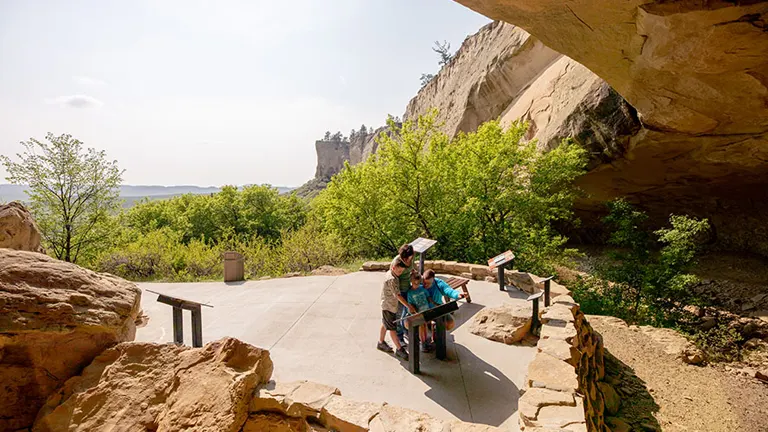
Embarking on a guided tour of the Pictograph Cave provides visitors with an immersive journey into the ancient history of the region. Led by knowledgeable guides, these tours delve into the cultural significance of the pictographs, offering contextual narratives that bring the rock art to life. Visitors gain a profound understanding of the stories depicted on the cave walls, spanning thousands of years of Native American heritage.
2. Interpretive Trail Exploration
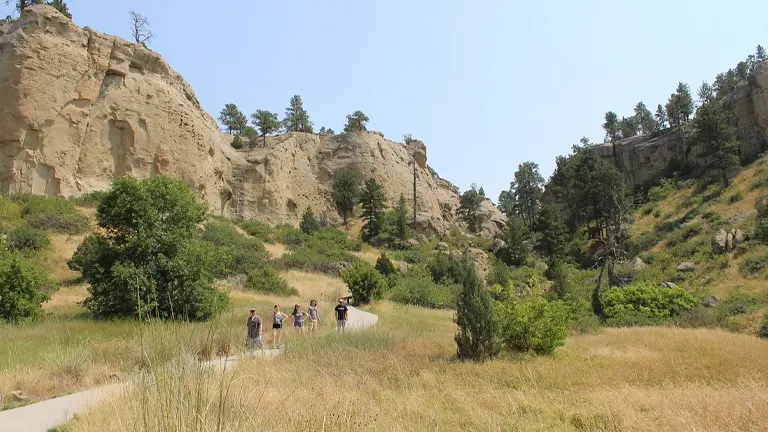
The interpretive trails at Pictograph Cave State Park weave through captivating landscapes, offering visitors an opportunity to engage with the park’s natural and historical wonders. These trails are meticulously designed, providing not only a scenic hiking experience but also educational markers that illuminate the geological formations, diverse plant life, and the significance of the archaeological sites. It’s a self-guided journey through time and nature.
3. Wildlife Observation
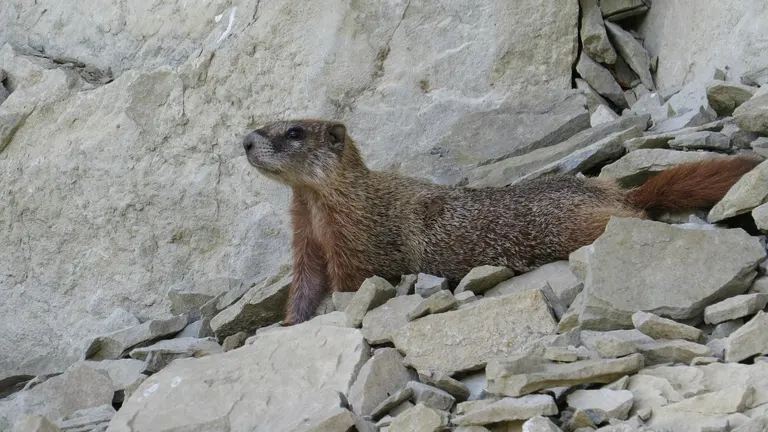
For wildlife enthusiasts, Pictograph Cave State Park serves as a vibrant habitat for various species. The park’s role as a wildlife corridor increases the chances of encountering mule deer, coyotes, and a diverse array of birds. With a pair of binoculars, visitors can appreciate the beauty of these creatures in their natural environment, enhancing the overall park experience.
4. Cultural and Educational Programs

Engaging cultural and educational programs at the park provide visitors with a deeper appreciation for the interconnectedness of nature and human history. Led by experts, these programs delve into the archaeological excavations, the significance of the caves, and the traditions of the Native American communities. The interactive nature of these programs fosters a sense of connection and understanding.
5. Ranger-Led Night Sky Programs
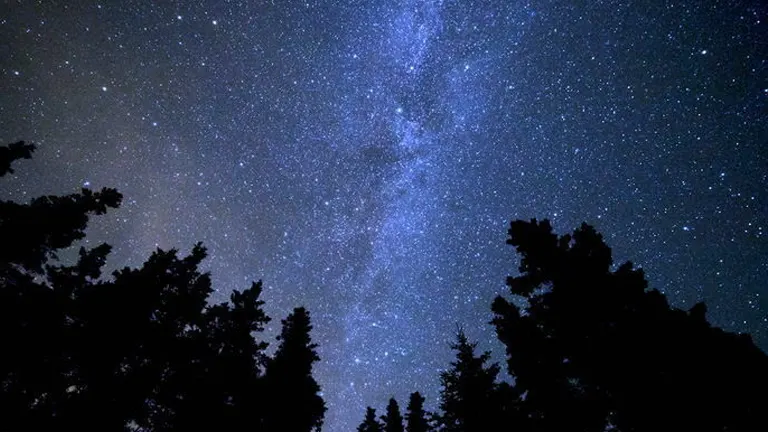
Pictograph Cave State Park’s dark skies make it an ideal location for stargazing. Ranger-led night sky programs offer visitors a chance to explore the cosmos, learn about constellations, and witness celestial wonders. Away from urban light pollution, the park becomes a natural observatory, providing an awe-inspiring experience under the vast Montana sky.
6. Photography Expeditions

Photography enthusiasts can capture the park’s breathtaking scenery, from the intricate pictographs to the diverse flora and fauna. Whether using a professional camera or a smartphone, every corner of the park presents a visually compelling subject. Guided photography workshops are also available, allowing visitors to refine their skills while documenting the natural and historical aspects of Pictograph Cave State Park.
7. Nature-Based Junior Ranger Program
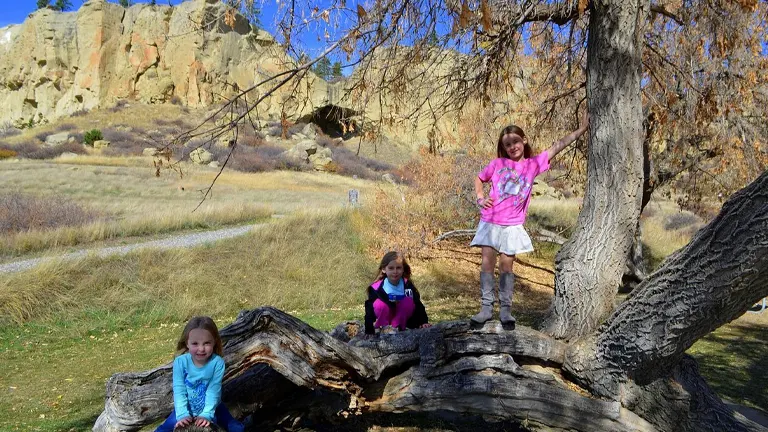
Tailored for young adventurers, the Junior Ranger Program engages children in nature-based activities, fostering a sense of exploration and environmental stewardship. Through hands-on experiences, kids learn about the park’s ecosystems, wildlife, and cultural history. Completing the program not only educates the next generation but also instills a lifelong appreciation for nature.
8. Seasonal Events and Festivals
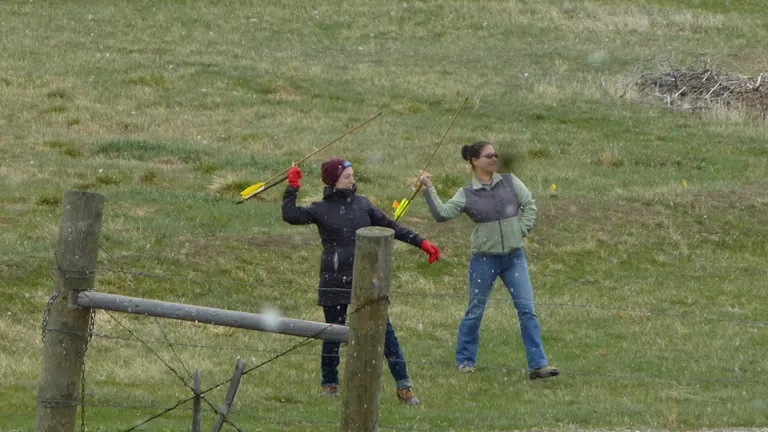
Pictograph Cave State Park hosts seasonal events and festivals, providing unique and thematic experiences for visitors. From celebrating the changing seasons to honoring indigenous traditions, these events offer a dynamic layer to the park’s offerings. Workshops, demonstrations, and cultural performances enrich the visitor experience, creating memorable moments throughout the year.
These activities collectively make Pictograph Cave State Park a multifaceted destination, catering to a diverse range of interests and ensuring a memorable and educational visit for every visitor.
Conservation and Management
- Archaeological Preservation: Pictograph Cave State Park places a paramount emphasis on the conservation of its archaeological treasures. Rigorous measures are in place to safeguard the ancient pictographs and artifacts within the caves. These preservation efforts include controlled access to the caves, climate control measures to mitigate environmental impact, and ongoing monitoring to ensure the longevity of these culturally significant elements. The park actively collaborates with archaeologists, cultural experts, and conservationists to strike a delicate balance between public access and the preservation of this archaeological legacy.
- Wildlife Habitat Management: The park undertakes comprehensive wildlife habitat management strategies to sustain the diverse fauna that calls Pictograph Cave home. These initiatives involve maintaining and restoring natural habitats, controlling invasive species, and implementing sustainable practices to ensure the ecological balance. By prioritizing wildlife corridors and preserving critical habitats, the park contributes to regional biodiversity and supports the conservation of both common and threatened species.
- Vegetation Conservation: Pictograph Cave State Park recognizes the importance of preserving its diverse plant life. Conservation efforts extend to protecting native vegetation, including the iconic ponderosa pine and other plant species that contribute to the park’s ecological integrity. Through habitat restoration, invasive species control, and responsible land management, the park strives to maintain the health and diversity of its flora, fostering resilient ecosystems.
- Cultural Resource Monitoring: A vigilant cultural resource monitoring program is integral to the park’s conservation endeavors. Trained professionals regularly assess the condition of archaeological sites, monitor the stability of the cave structures, and implement measures to prevent deterioration. This proactive approach ensures that the rich cultural heritage of Pictograph Cave remains intact and accessible for future generations, while minimizing the impact of external factors.
- Visitor Education and Interpretation: Conservation at Pictograph Cave State Park is not solely about protecting physical resources; it also involves educating and engaging visitors in responsible stewardship. Interpretive programs, guided tours, and educational materials inform visitors about the delicate balance between exploration and preservation. By fostering an understanding of the park’s ecological and cultural significance, the management encourages visitors to actively participate in conservation efforts.
- Water Quality Management: Recognizing the importance of water resources within the park, management initiatives focus on maintaining water quality. Protection measures include erosion control to prevent sedimentation, monitoring water sources for pollutants, and implementing best practices for sustainable water use. These efforts contribute to the overall health of the park’s ecosystems, supporting both terrestrial and aquatic life.
- Infrastructure Sustainability: The park pursues sustainability in its infrastructure to minimize its ecological footprint. From energy-efficient facilities to waste reduction initiatives, Pictograph Cave State Park adopts practices that align with environmental stewardship. These efforts extend to trail maintenance, minimizing soil erosion and ecological disruption, ensuring that visitor amenities coexist harmoniously with the natural surroundings.
- Collaboration with Indigenous Communities: Acknowledging the deep cultural connections of Pictograph Cave to indigenous communities, the park management actively collaborates with these groups. This collaboration involves consultation on conservation strategies, interpretation of cultural resources, and mutual efforts to preserve the spiritual and historical significance of the park. This inclusive approach ensures that conservation measures are culturally sensitive and rooted in shared stewardship.
Pictograph Cave State Park’s commitment to conservation and management extends beyond individual components, reflecting a holistic approach that harmonizes cultural preservation, ecological sustainability, and responsible visitor engagement. Through these initiatives, the park strives to be a model for the seamless integration of conservation practices and public enjoyment of natural and cultural resources.
Recommendation
I highly recommend exploring Pictograph Cave State Park for a captivating blend of natural beauty and cultural importance. This park, renowned for its diverse landscapes, iconic cave art, and recreational opportunities, offers a unique and immersive experience. Engage in reflective outdoor activities such as hiking and wildlife observation while actively contributing to ongoing conservation efforts. The scenic trails, ancient pictographs, and collaborative conservation projects establish Pictograph Cave State Park as a crucial destination for those seeking a harmonious integration of nature and recreational discovery.
Conclusion
In conclusion, Pictograph Cave State Park is a unique destination that offers visitors the opportunity to explore Montana’s rich cultural history and natural beauty. With its three caves holding secrets from a bygone era, this archaeological treasure trove provides a fascinating window into the lives of Montana’s early inhabitants. The park’s scenic trails, interpretive signs, and visitor center also offer visitors a chance to immerse themselves in the captivating allure of the park’s natural surroundings. Above all, the vivid pictographs adorning the walls of Pictograph Cave stand as a testament to the rich cultural heritage and artistic expressions of Native American communities, making a visit to this park a must for anyone interested in experiencing the history and beauty of Montana.
FAQs
- What makes Pictograph Cave State Park unique among Montana’s parks?
Pictograph Cave State Park stands out for its rich archaeological significance. Housing ancient pictographs dating back over 2,000 years, it offers a glimpse into the cultural tapestry of Native American communities that once thrived in this region. - Are the pictographs easily accessible to visitors, and can we get close to them?
While visitors cannot physically touch the pictographs to preserve their integrity, carefully designed interpretive trails provide excellent views. These trails offer both proximity to the cave entrances and informative signage explaining the historical and cultural contexts of the pictographs. - How is Pictograph Cave State Park involved in conservation efforts?
The park actively participates in conservation endeavors, focusing on archaeological preservation, wildlife habitat management, and vegetation conservation. Collaborative initiatives with indigenous communities and responsible visitor education contribute to the overall conservation ethos. - Can visitors engage in wildlife observation within the park?
Absolutely! Pictograph Cave State Park is a designated wildlife corridor, offering opportunities to observe diverse species such as mule deer, coyotes, and various birds. Binoculars in hand, visitors can appreciate the natural beauty and ecological richness of the park. - Are there any special events or programs at Pictograph Cave State Park throughout the year?
Yes, the park hosts seasonal events, workshops, and educational programs. From stargazing nights to cultural celebrations, these activities provide unique opportunities for visitors to connect with the park’s natural and historical facets. - How does the park balance conservation with visitor access and enjoyment?
Striking a delicate balance, the park implements controlled access to sensitive areas to preserve archaeological sites. Interpretive programs and responsible tourism practices ensure that visitors can enjoy the park while minimizing their impact on the delicate ecosystem. - Are there facilities for picnicking or spending a day at the park?
Certainly! Pictograph Cave State Park offers designated picnicking areas equipped with tables, providing a perfect setting for visitors to relax and enjoy a meal amidst the natural surroundings. It’s an ideal way to extend your stay and immerse yourself in the park’s beauty. - Can visitors participate in guided tours to enhance their experience?
Absolutely. Guided tours led by knowledgeable park staff provide in-depth insights into the pictographs, archaeological excavations, and the overall cultural and natural history of the park. It’s an enriching way to deepen your understanding of this unique Montana treasure.
Visiting Pictograph Cave State Park is an unforgettable experience that takes you on a journey through Montana’s rich cultural heritage. The park offers you a glimpse into the lives of the region’s earliest inhabitants and their artistic expressions. From the vivid pictographs to the fascinating artifacts, the caves are a testament to the talent and resourcefulness of Native American communities. But beyond the archaeological wonders, the park also boasts scenic trails, interpretive signs, and a visitor center that makes it a perfect destination for both history enthusiasts and nature lovers. Whether you’re a local or a visitor, a trip to Pictograph Cave State Park is an adventure that you won’t forget.


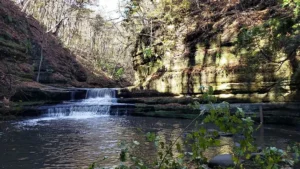

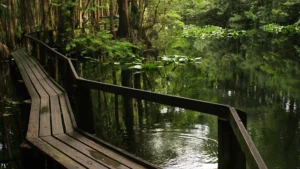
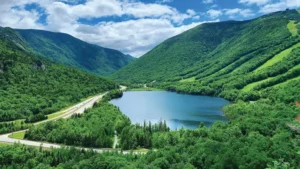
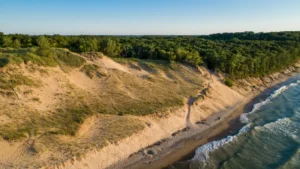

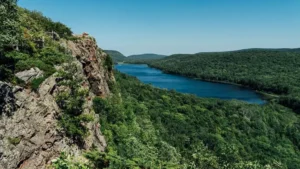


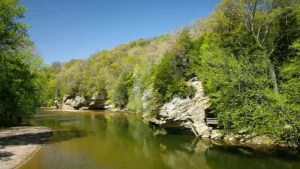
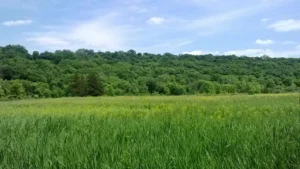
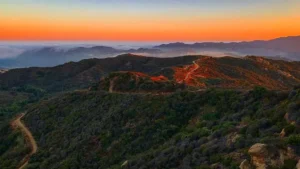
Leave your comment